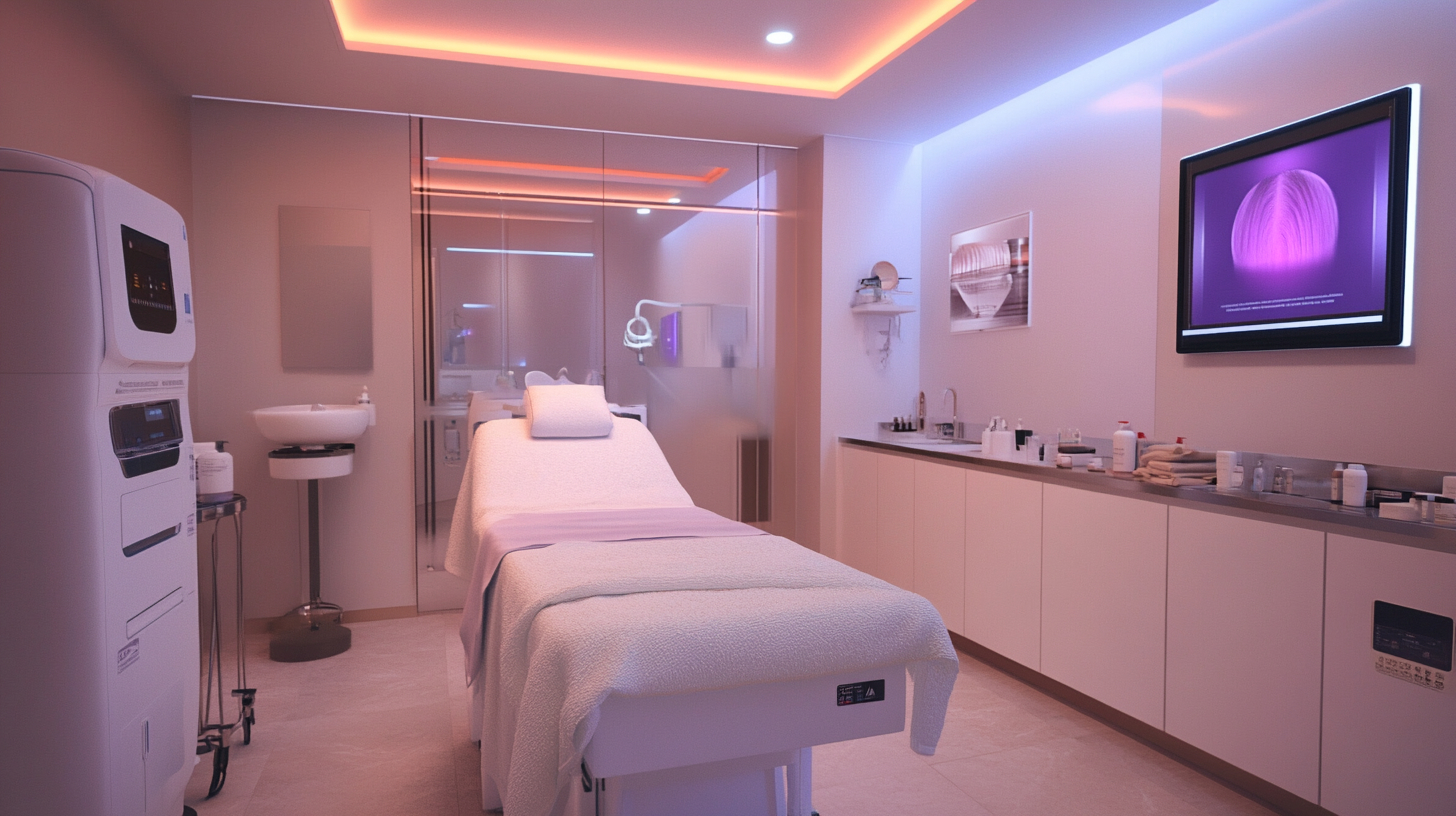How much are you willing to invest in smooth, hairless skin? That’s a question you might find yourself pondering when considering laser hair removal. It’s an intriguing topic because, let’s face it, unwanted hair can be quite the nuisance. But before you jump into the decision, it’s crucial to know what kind of investment you’re looking at. Let’s break it down so you can make an informed choice that suits your needs and budget.
Understanding Laser Hair Removal
Before we get into dollars and cents, let’s take a moment to understand what laser hair removal actually involves. Knowing the basics can help you appreciate why the costs might vary and what you can expect from the procedure.
What is Laser Hair Removal?
In the simplest terms, laser hair removal is a medical procedure that uses a concentrated beam of light (laser) to remove unwanted hair. During this process, the laser emits light that’s absorbed by the pigment (melanin) in the hair. The light energy is then converted to heat, which damages the hair follicles, inhibiting future hair growth.
How Does it Work?
The key to the success of laser hair removal lies in the fact that hair grows in cycles. Because the laser targets hair in the active growth phase, multiple treatments are usually needed. This not only ensures maximum hair reduction but also long-lasting results, which is why many people turn to this solution despite the upfront cost.
Get Your Free Consultation Today
Factors Influencing the Cost of Laser Hair Removal
So, let’s get into what you really want to know: how much does all of this cost? Unfortunately, there’s no one-size-fits-all answer, but we can break it down into several key factors that will give you a clearer picture.
Size of the Area Being Treated
Naturally, the larger the area, the more time and energy it requires to treat, which can influence the cost. Here’s a quick breakdown:
| Treatment Area | Average Cost Per Session |
|---|---|
| Upper Lip | $50 – $150 |
| Underarms | $100 – $250 |
| Bikini Line | $150 – $450 |
| Full Legs | $300 – $600 |
| Back | $300 – $800 |
It’s common for larger areas, such as the back or legs, to be priced higher compared to smaller areas like the upper lip or chin.
Number of Sessions Required
Laser hair removal typically isn’t a one-and-done kind of deal. Multiple sessions are needed because hair follicles are all at different stages of growth at any given time. Most people require between 4 to 8 sessions to achieve optimal results. This is something to keep in mind when calculating the overall cost.
Provider’s Experience and Reputation
Experience matters. An experienced dermatologist or licensed technician typically charges more for their expertise, which can contribute to higher costs. But with that comes a track record of successful treatments and a wealth of knowledge to ensure your safety and satisfaction.
Location and Facility
Where you live can also affect how much you pay. Urban areas or areas with a higher cost of living tend to have higher prices for laser treatments. Plus, facilities with advanced and newer technology might charge more than those with older equipment.
Technology Used
The type of laser technology utilized can impact the cost too. Some lasers are more versatile and effective for different skin and hair types, and they might come at a premium.
Why Opt for Laser Hair Removal?
With so many hair removal options out there, why choose laser hair removal? Let’s talk about its advantages, which might make you feel a little bit better about the investment.
Long-Term Results
Unlike waxing or shaving, laser hair removal provides more permanent results. With each session, hair grows back finer and sparser until it stops growing altogether for many people.
Precision
Lasers can be incredibly precise, targeting dark and coarse hair while leaving the surrounding skin undamaged. This precision ensures an effective outcome, especially on areas like the face or bikini line, where precision is particularly crucial.
Time and Cost-Efficient Over Time
While the initial cost might seem high, consider the lifetime cost of other hair removal methods like waxing or shaving. Over time, the repeated purchases of razors, wax strips, creams, or salon visits can add up, potentially exceeding the cost of laser hair removal.
Preparing for Your Laser Hair Removal Treatment
Getting ready for a laser hair removal session isn’t as simple as showing up at the clinic. There are things you need to consider and prepare in advance.
Consultation
Before your first session, most clinics will offer a consultation. This is where a specialist will assess your skin and hair type and discuss the number of sessions you might need. A consultation can be a good opportunity to understand the cost structure based on your unique situation.
Pre-Treatment Instructions
You’ll probably receive a list of do’s and don’ts before your treatment. This may include avoiding sun exposure and certain skin products. Following these guidelines can help enhance the effectiveness of your treatment and ensure your safety.
What to Expect During and After Treatment
Understanding what happens during and after treatment can ease any anxiety and help manage your expectations.
The Procedure Itself
The session can last anywhere from a few minutes for small areas to over an hour for larger areas like the back or legs. During the treatment, you may feel a sensation akin to a rubber band snapping against your skin. Most people find this manageable, especially with cooling measures provided by most systems.
Post-Treatment Care
After your session, your skin might be a bit pink or irritated, similar to a mild sunburn. You’ll need to follow aftercare instructions provided by the clinician, which often includes avoiding sun exposure and using a gentle cleanser and moisturizer.
Potential Risks and Side Effects
Every procedure comes with potential risks, and being aware of these can help you make an informed decision.
Common Side Effects
Most side effects are mild and temporary, such as redness, swelling, and discomfort. These usually subside within a few hours or days.
Rare Risks
Though rare, some people can experience burns, blisters, or changes in skin color. It’s essential to choose a reputable provider to minimize these risks.
The Role of Skin Tone and Hair Color
An important consideration is that not all skin tones and hair colors respond to laser hair removal the same way.
Skin Tone
Lasers traditionally targeted melanin, which made darker skin tones more prone to side effects. However, advancements in technology have improved safety and effectiveness on all skin types.
Hair Color
Laser hair removal is most effective on people with light skin and dark hair because the laser targets the pigment in the hair. People with lighter hair might not see as dramatic results, although new technologies are constantly improving.
Making the Decision
So, how do you make the final decision? Here are a few considerations to weigh.
Weigh the Costs and Benefits
Think of laser hair removal as an investment in your convenience and appearance. If you’re fed up with razors, waxing, and tweezing, the upfront cost might be justified by the long-term benefits.
Timing and Commitment
Consider your schedule and realistic outcomes. Are you ready to commit the time to a session every few weeks? Good results take patience and persistence, so make sure you’re mentally prepared for the journey.
Conclusion
Laser hair removal can be a game-changer in your beauty maintenance routine, offering long-lasting results with relative ease and safety. The costs can vary widely based on multiple factors like area size, provider expertise, location, and unique treatment needs. By understanding these nuances, you can make an informed decision that aligns with both your beauty goals and budget.
For those in or near Las Vegas, Spoiled Laser offers a range of services to help you achieve your desired look. Located at 8665 W Flamingo Rd, they can guide you through the process and help you explore what options are best suited for you. If you have more questions, reach out to them at 702-228-5171.
Now, what’s your next step? Maybe it’s scheduling a consultation, doing a bit more research, or even just giving yourself time to think it over. Whatever it is, you’re now equipped with the knowledge to make the best decision for yourself.


